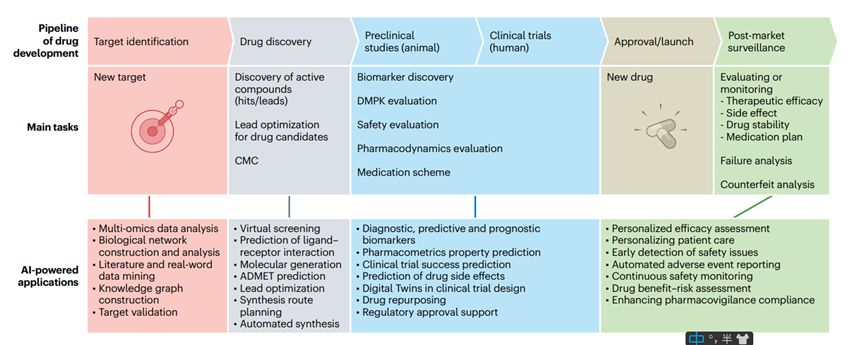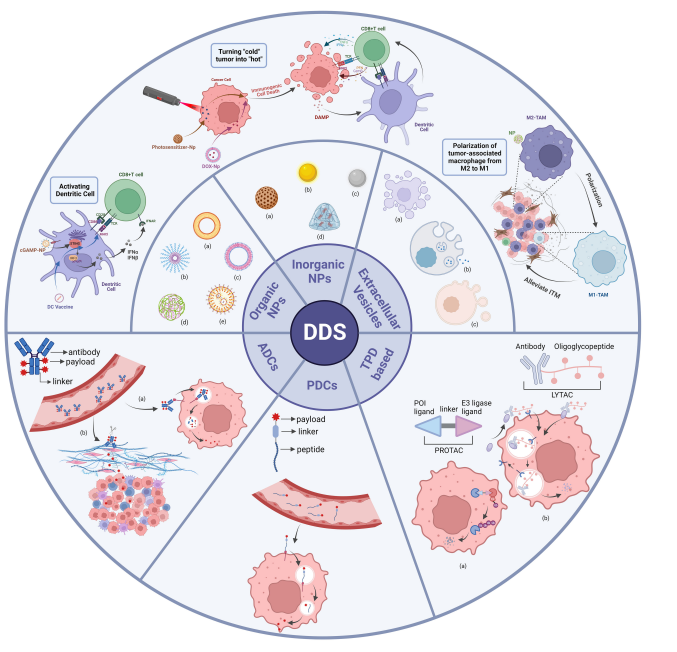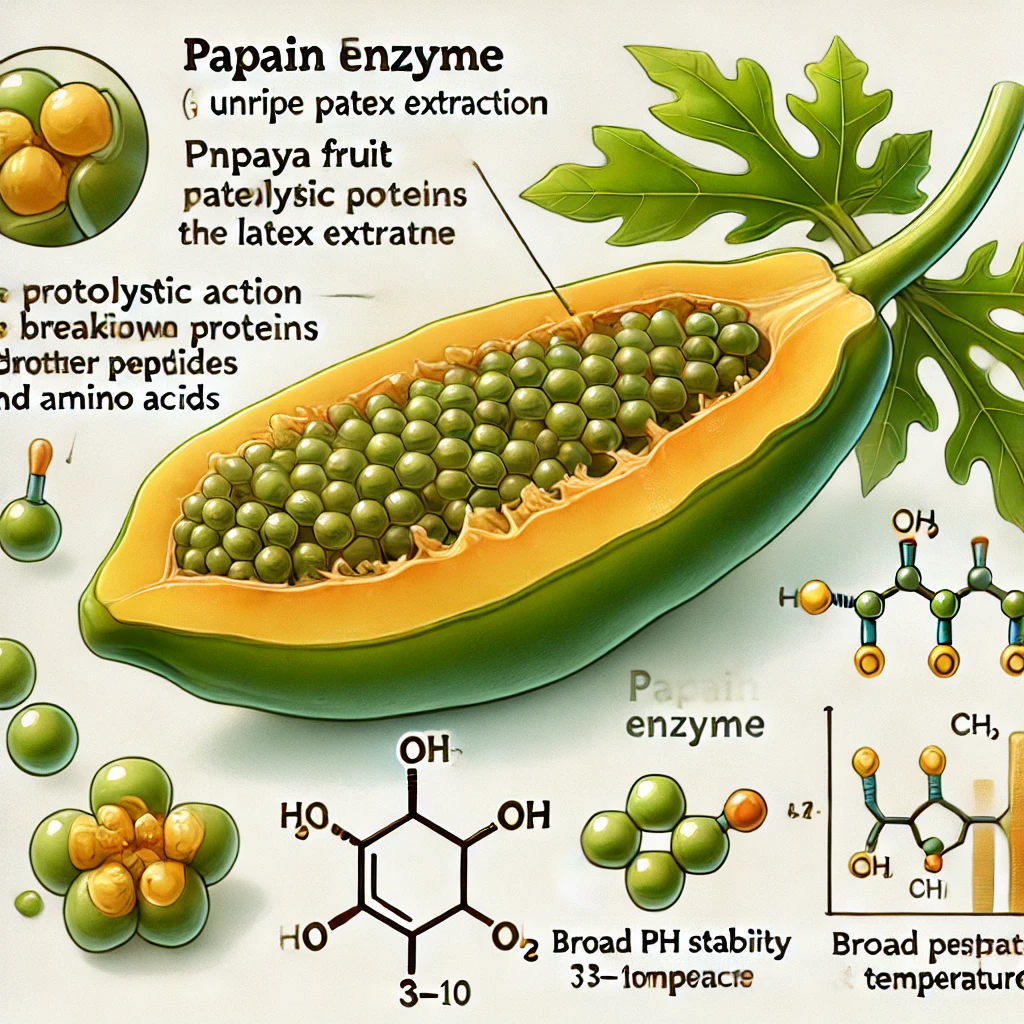GPCR Drug Discovery: New Drugs, New Targets, and New Indications
Abstract
G protein-coupled receptors (GPCRs) remain one of the most valuable and versatile classes of drug targets in modern medicine. This blog explores the evolving landscape of GPCR drug discovery, highlighting recent advances in therapeutic development, receptor targeting, and disease indications. From classical roles in cardiovascular and neurological disorders to emerging applications in cancer, autoimmune conditions, and rare diseases, GPCRs are undergoing a renaissance fueled by technological innovation. New modalities such as biased ligands, allosteric modulators, and AI-driven drug design are enabling greater specificity and functional selectivity. As a result, pharmaceutical pipelines are now expanding beyond well-known receptors to include orphan and previously “undruggable” GPCRs. This transformation signals a new era in precision pharmacology, where understanding receptor mechanisms and leveraging next-generation tools are key to unlocking novel treatments across a wide spectrum of diseases.
Introduction
G protein-coupled receptors (GPCRs) represent one of the most pivotal families of membrane proteins in human physiology and pharmacology. They are involved in nearly every biological process—ranging from vision and taste to mood regulation and immune responses. With more than 800 GPCRs encoded in the human genome, these receptors mediate the cellular response to a wide array of stimuli, including hormones, neurotransmitters, peptides, and even light.
The significance of GPCRs in medicine is staggering. They are the targets of approximately one-third of all FDA-approved drugs, underscoring their importance as therapeutic gateways. Classic examples include beta-blockers for hypertension, opioids for pain management, and antihistamines for allergic reactions. These drugs work by modulating GPCR activity—either enhancing or blocking the signal transduction initiated by ligand binding.
However, despite decades of success, much of the GPCR universe remains untapped. Recent advances in genomics, structural biology, and computational drug design are opening new doors for GPCR-targeted therapeutics. Researchers are now identifying novel GPCR targets, designing next-generation drugs like biased agonists and allosteric modulators, and repurposing existing GPCR ligands for new disease indications such as cancer, metabolic disorders, and neurodegenerative diseases.
This blog explores the evolving landscape of GPCR drug discovery—from newly approved drugs to emerging receptor targets and expanding therapeutic uses. We’ll delve into the science, highlight cutting-edge innovations, and examine how the pharmaceutical industry is reimagining the potential of GPCRs in modern medicine.
Understanding GPCR Mechanisms
G protein-coupled receptors (GPCRs) share a conserved structural framework that underlies their versatile functionality: seven transmembrane α-helices that traverse the cell membrane. These helices form a binding pocket for a vast array of ligands—ranging from small molecules and peptides to lipids and even photons. Upon ligand engagement, GPCRs undergo conformational changes that activate intracellular signaling pathways, making them ideal molecular switches for transmitting external stimuli into cellular responses.
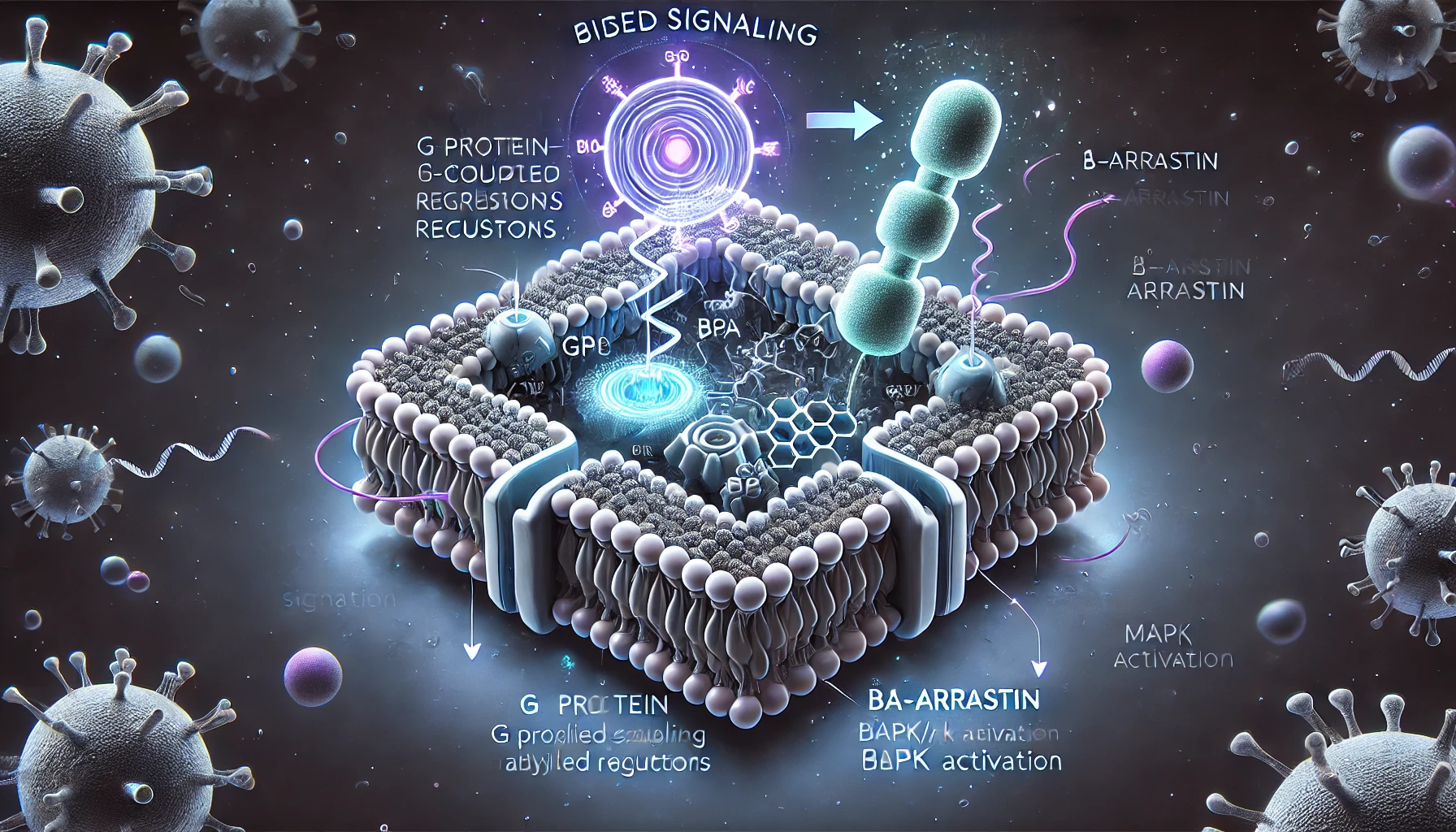
The hallmark of GPCR signaling lies in their interaction with heterotrimeric G proteins, composed of α, β, and γ subunits. Upon activation, the Gα subunit exchanges GDP for GTP and dissociates from the Gβγ dimer, allowing both components to modulate downstream effectors such as adenylyl cyclase, phospholipase C, or ion channels. This triggers a cascade of biochemical events inside the cell that ultimately leads to a physiological response.
Interestingly, GPCR signaling is not linear nor uniform. Mechanisms such as receptor desensitization, internalization, and signal biasing add layers of complexity. β-arrestins, for example, can both dampen G protein signaling and activate alternative pathways like ERK or MAPK cascades. This phenomenon, known as biased signaling, opens the door for more selective therapeutic interventions with fewer side effects.
GPCRs are categorized into several classes based on sequence homology and ligand types—Class A (Rhodopsin-like), Class B (Secretin-like), and Class C (Metabotropic glutamate-like) being the most prominent. Each class exhibits distinct signaling nuances, broadening the pharmacological landscape.
Understanding these intricate mechanisms is essential for the development of next-generation therapeutics. By exploiting structural dynamics, signal pathways, and receptor subtypes, researchers can tailor drugs with unprecedented precision, ushering in a new era of GPCR-targeted therapy.
New Drugs in GPCR Drug Discovery
Over the past decade, GPCR drug discovery has entered a renaissance, driven by technological advancements and a deeper understanding of receptor signaling. While the first wave of GPCR drugs focused on a handful of well-characterized receptors like the β-adrenergic and histamine receptors, today’s pharmaceutical landscape is expanding toward novel receptor targets and innovative drug modalities.
Recent approvals such as ubrogepant (a CGRP receptor antagonist for migraine) and lasmiditan (a serotonin receptor agonist) reflect how GPCR-based therapies are entering new therapeutic domains, particularly neurology and chronic pain. These drugs showcase not only new indications but also improved specificity and safety profiles, enabled by refined targeting strategies.
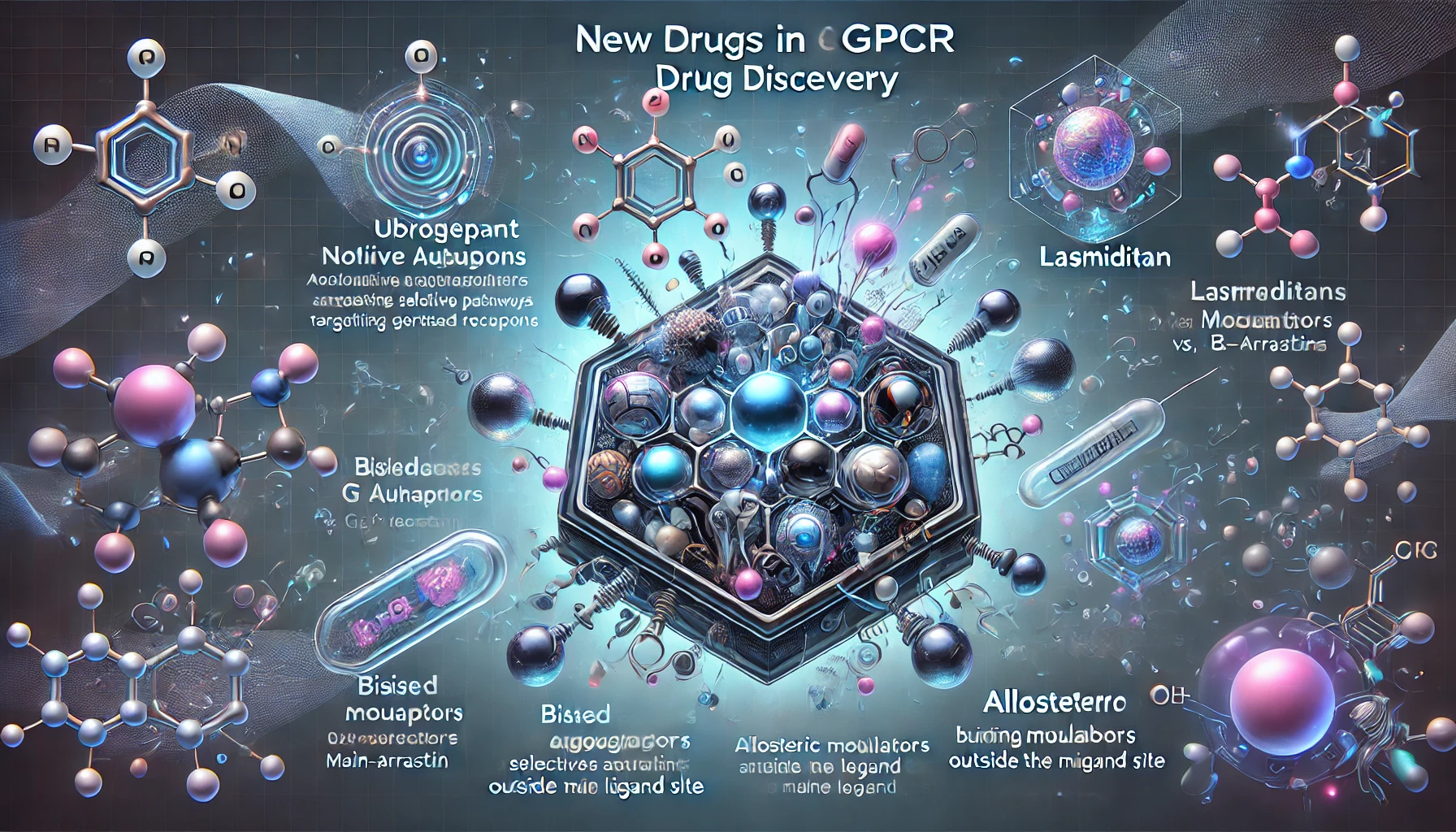
One of the most exciting developments in this area is the emergence of biased agonists—compounds that preferentially activate either G protein or β-arrestin pathways. For example, TRV130 (oliceridine), a biased μ-opioid receptor agonist, was designed to retain analgesic effects while reducing common opioid side effects like respiratory depression. Though its regulatory journey was complex, it marked a turning point in designing drugs with functional selectivity.
Similarly, allosteric modulators, which bind outside the orthosteric (main ligand-binding) site, offer enhanced receptor subtype selectivity and tunable activity. These are being actively pursued in targets like the muscarinic and glutamate receptor families.
Challenges remain—particularly in targeting GPCRs with low expression, transient conformations, or complex signaling profiles. However, advances in high-throughput screening, machine learning, and structural biology (like cryo-EM) are enabling the design of more effective and safer drugs.
Emerging GPCR Targets
While traditional drug discovery has largely focused on a select subset of GPCRs, a significant portion of the GPCRome remains unexplored. These orphan GPCRs—receptors with unknown or poorly characterized endogenous ligands—represent a promising but challenging frontier in pharmacology. Recent advances in genomics, transcriptomics, and CRISPR-based screening are now beginning to shed light on their roles in disease, making them attractive candidates for drug development.
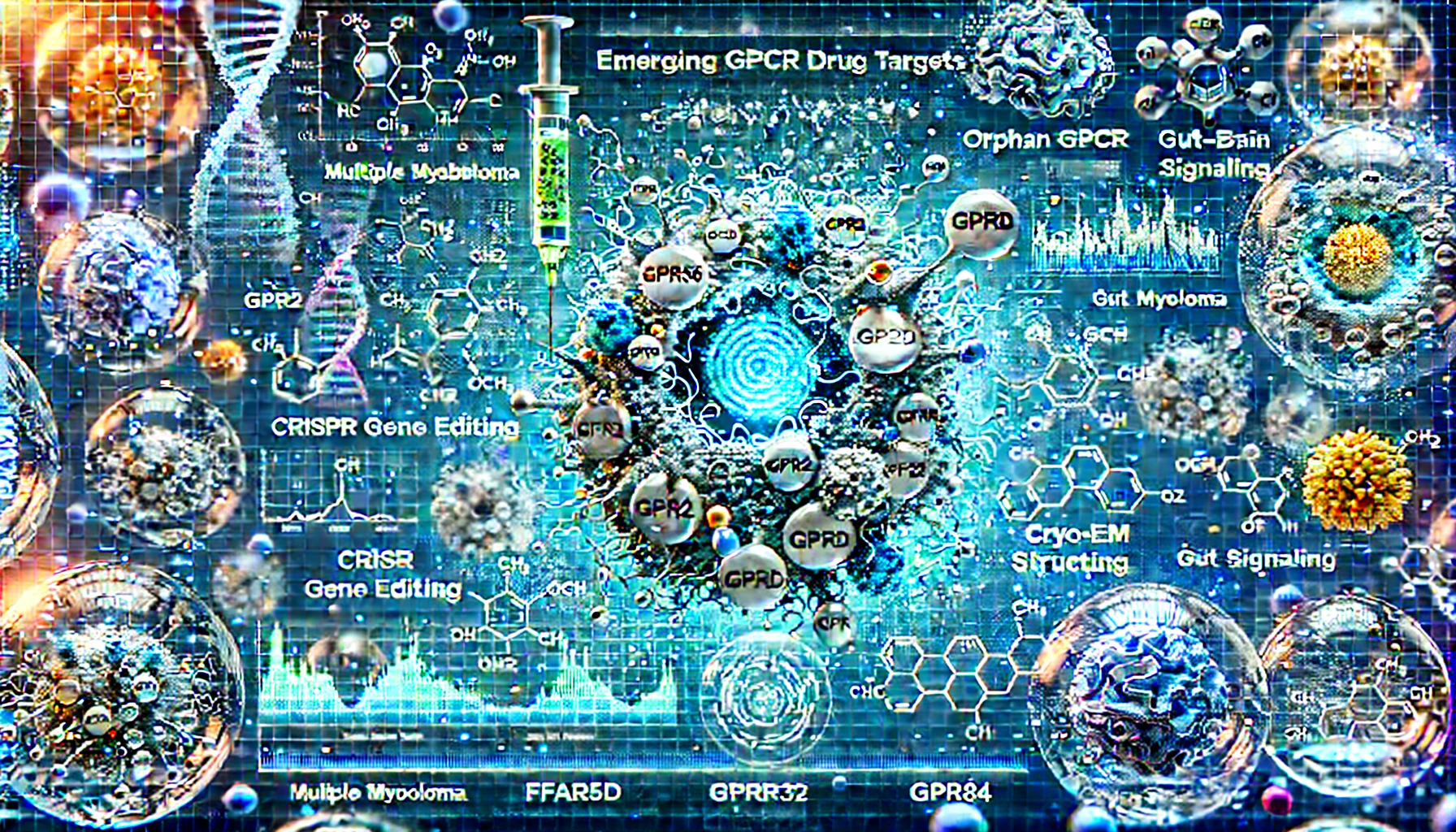
One area drawing growing interest is the role of GPCRs in oncology. For example, GPR56, once an obscure receptor, has been linked to glioblastoma and melanoma progression. Similarly, GPRC5D is emerging as a target in multiple myeloma, with novel immunotherapies like CAR-T cells now being engineered to exploit this receptor.
Other GPCRs gaining attention include FFAR2 and FFAR3, which play critical roles in metabolic inflammation and gut-brain signaling—offering potential interventions for diabetes and obesity. GPR35 and GPR84, implicated in inflammatory bowel disease and fibrosis, are also advancing toward clinical validation.
These developments are made possible by technological strides in protein structure resolution (via cryo-EM and AI modeling), ligand screening platforms, and biosensor technologies. As a result, researchers can now study dynamic receptor conformations and identify ligands that bind with high specificity and functional selectivity.
The challenge ahead is translating these discoveries into viable therapies. Many emerging GPCRs have tissue-specific expression, complex signaling profiles, or lack robust animal models, making validation difficult. Nonetheless, pharmaceutical companies and biotech startups are investing heavily in deorphanizing GPCRs and bringing first-in-class drugs to new disease areas.
The next generation of GPCR drug discovery will likely be defined by how well we can unlock the potential of these underexplored targets—and turn them into therapeutic game-changers.
New Indications for GPCR-Targeted Drugs
Traditionally, GPCR-targeting drugs were designed with a narrow focus: treat cardiovascular disease, pain, or allergies. However, a deeper understanding of receptor signaling and disease biology is driving a dramatic expansion in therapeutic indications. Today, GPCRs are being explored in oncology, neurodegeneration, immunology, metabolic disorders, and even rare diseases—areas once considered outside the typical GPCR domain.
Take neurological disorders, for example. The GPR139 receptor has recently been implicated in psychiatric and neurodevelopmental conditions such as schizophrenia and autism spectrum disorder. Similarly, orphan GPCRs like GPR52 and GPR6 are being studied for their potential in treating Parkinson’s disease and Huntington’s disease, offering new strategies where traditional dopaminergic therapies fall short.
In oncology, GPCRs are gaining traction not just as signaling nodes but also as surface markers for targeted delivery. GPCRs like CXCR4 and GPRC5D are now being exploited in immuno-oncology, particularly for CAR-T cell therapies and antibody-drug conjugates (ADCs), targeting cancers such as leukemia and multiple myeloma.
Additionally, metabolic and autoimmune conditions are benefitting from GPCR-based therapies that modulate inflammation and immune responses. Drugs targeting S1P receptors (like ozanimod and fingolimod) are approved for multiple sclerosis and ulcerative colitis, while others are being explored for lupus, psoriasis, and rheumatoid arthritis.
The therapeutic landscape is also expanding into rare diseases and orphan indications, where even modest clinical benefits can be transformative. GPCRs involved in retinal disorders, fibrosis, and congenital metabolic diseases are beginning to enter the development pipeline.
This shift is fueled by precision medicine and biomarker-guided research, allowing researchers to match GPCR expression profiles with patient subgroups for more effective and personalized treatment strategies. The result: a future where GPCR-targeted therapies aren’t just abundant—but also far more adaptable.
Technological Advancements in GPCR Drug Discovery
The resurgence of GPCR-targeted drug discovery is deeply tied to a wave of technological breakthroughs that are redefining how we understand and manipulate these complex receptors. From cryo-electron microscopy (cryo-EM) to artificial intelligence (AI), researchers now have tools that allow them to explore GPCRs at an atomic level and design drugs with unprecedented precision.
One of the most transformative changes has been in structural biology. Once considered too dynamic and unstable for high-resolution imaging, GPCRs are now routinely visualized using cryo-EM, revealing conformational states critical for drug binding and functional selectivity. These insights enable the rational design of biased ligands and allosteric modulators, fine-tuned to specific therapeutic effects.
High-throughput screening (HTS) platforms and biosensor assays have also advanced, allowing real-time measurement of GPCR activity in various cellular contexts. These tools help screen massive compound libraries to identify candidates that modulate GPCRs with unique signaling profiles.
Equally important is the integration of AI and machine learning. Algorithms now predict ligand binding, receptor-ligand interactions, and potential off-target effects with growing accuracy. AI also enables virtual screening, reducing reliance on costly wet-lab experiments and accelerating early-phase discovery.
Moreover, computational modeling tools like AlphaFold and RosettaGPCR are filling in structural gaps for orphan and less-characterized GPCRs. These models provide crucial starting points for drug design and understanding signaling nuances.
Finally, single-cell transcriptomics and spatial omics are uncovering GPCR expression patterns across tissues and disease states, paving the way for personalized targeting strategies.
Together, these innovations are converting GPCR drug discovery from a trial-and-error process into a data-driven, mechanism-informed science—marking a new era of precision pharmacology.
Future Directions and Trends
The future of GPCR drug discovery lies not only in identifying new molecules but also in reimagining how we target these receptors. With advances in structural biology, AI, and precision medicine converging, the next generation of GPCR-based therapies will likely be smarter, safer, and more selective.
One exciting direction is the growing focus on functional selectivity, also known as biased signaling. Instead of indiscriminately activating all downstream pathways, biased ligands can steer GPCRs to trigger only beneficial effects while minimizing side effects. This paradigm shift promises to improve safety profiles for drugs treating pain, psychiatric disorders, and inflammatory conditions.
Another major trend is the expansion of GPCR-targeted therapies into gene and cell-based technologies. For example, GPCR-based CAR-T cells are being engineered to recognize tumor-specific receptors, offering novel treatments for hematologic malignancies. Meanwhile, synthetic biology approaches are enabling the creation of engineered GPCRs that can sense and respond to custom stimuli—a powerful tool for both therapeutics and diagnostics.
The integration of omics data—genomics, proteomics, transcriptomics—is also enhancing our ability to match GPCR targets with specific patient populations. This will be key to enabling precision GPCR medicine, where therapies are tailored not just by disease type but by individual receptor expression patterns.
Industry partnerships and academic collaborations are expected to play a pivotal role. Initiatives like the GPCR Consortium are creating open-access structural data, accelerating innovation across sectors. At the same time, investment in AI-driven platforms for GPCR screening and modeling is surging.
In short, GPCR drug discovery is poised for a second golden age—fueled by cross-disciplinary innovation and a deeper understanding of receptor biology. The next wave of GPCR-targeting drugs won’t just treat disease—they’ll redefine the very idea of targeted therapy.
Conclusion
G protein-coupled receptors (GPCRs) have long been central to pharmacology, but we are now witnessing a profound evolution in how these receptors are understood and targeted. From legacy treatments like beta-blockers and antihistamines to cutting-edge biased ligands and allosteric modulators, GPCR-targeted drug discovery is entering a dynamic and promising new phase.
What makes this moment so significant is not just the emergence of new drugs, but the expansion of GPCR targets and therapeutic indications. Researchers are going beyond the well-characterized receptors and exploring orphan GPCRs with potential roles in cancer, metabolic diseases, neurodegeneration, and rare disorders. At the same time, previously approved drugs are being repurposed for entirely new diseases—often supported by growing insights into GPCR signaling complexity and tissue-specific expression.
Driving this transformation are technological breakthroughs across multiple disciplines: AI-powered drug design, cryo-EM structural resolution, high-throughput biosensor assays, and multi-omics data integration. Together, these tools are enabling a precision approach to GPCR pharmacology that was unimaginable just a decade ago.
Still, challenges remain. Deorphanizing GPCRs, ensuring drug selectivity, and managing complex signaling pathways require sustained research, collaboration, and investment. But the path forward is clear—and full of potential.
For biotech innovators, pharmaceutical leaders, and researchers alike, the GPCR space represents a frontier where discovery meets impact. By continuing to explore new targets, develop smarter drugs, and expand therapeutic horizons, we can harness the full power of this receptor superfamily.
As we look ahead, one thing is certain: the story of GPCRs in drug discovery is far from over. In fact, it’s just beginning a bold new chapter.
References
Hauser AS, Attwood MM, Rask-Andersen M, Schiöth HB, Gloriam DE. Trends in GPCR drug discovery: new agents, targets and indications. Nat Rev Drug Discov. 2017 Dec;16(12):829-842. doi: 10.1038/nrd.2017.178. Epub 2017 Oct 27. PMID: 29075003; PMCID: PMC6882681.
https://www.nature.com/articles/nrd.2017.178
Cheng L, Xia F, Li Z, Shen C, Yang Z, Hou H, Sun S, Feng Y, Yong X, Tian X, Qin H, Yan W, Shao Z. Structure, function and drug discovery of GPCR signaling. Mol Biomed. 2023 Dec 4;4(1):46. doi: 10.1186/s43556-023-00156-w. PMID: 38047990; PMCID: PMC10695916.
https://link.springer.com/article/10.1186/s43556-023-00156-w
Guo S, Zhao T, Yun Y, Xie X. Recent progress in assays for GPCR drug discovery. Am J Physiol Cell Physiol. 2022 Aug 1;323(2):C583-C594. doi: 10.1152/ajpcell.00464.2021. Epub 2022 Jul 11. PMID: 35816640.
https://journals.physiology.org/doi/full/10.1152/ajpcell.00464.2021
Addis P, Bali U, Baron F, Campbell A, Harborne S, Jagger L, Milne G, Pearce M, Rosethorne EM, Satchell R, Swift D, Young B, Unitt JF. Key aspects of modern GPCR drug discovery. SLAS Discov. 2024 Jan;29(1):1-22. doi: 10.1016/j.slasd.2023.08.007. Epub 2023 Aug 23. PMID: 37625784.
https://www.sciencedirect.com/science/article/pii/S2472555223000643
Casadó-Anguera V, Casadó V. Unmasking allosteric-binding sites: novel targets for GPCR drug discovery. Expert Opin Drug Discov. 2022 Aug;17(8):897-923. doi: 10.1080/17460441.2022.2085684. Epub 2022 Jun 13. PMID: 35649692.
https://www.tandfonline.com/doi/abs/10.1080/17460441.2022.2085684
McKay K, Hamilton NB, Remington JM, Schneebeli ST, Li J. Essential Dynamics Ensemble Docking for Structure-Based GPCR Drug Discovery. Front Mol Biosci. 2022 Jun 29;9:879212. doi: 10.3389/fmolb.2022.879212. PMID: 35847975; PMCID: PMC9277106.
https://www.frontiersin.org/journals/molecular-biosciences/articles/10.3389/fmolb.2022.879212/full

